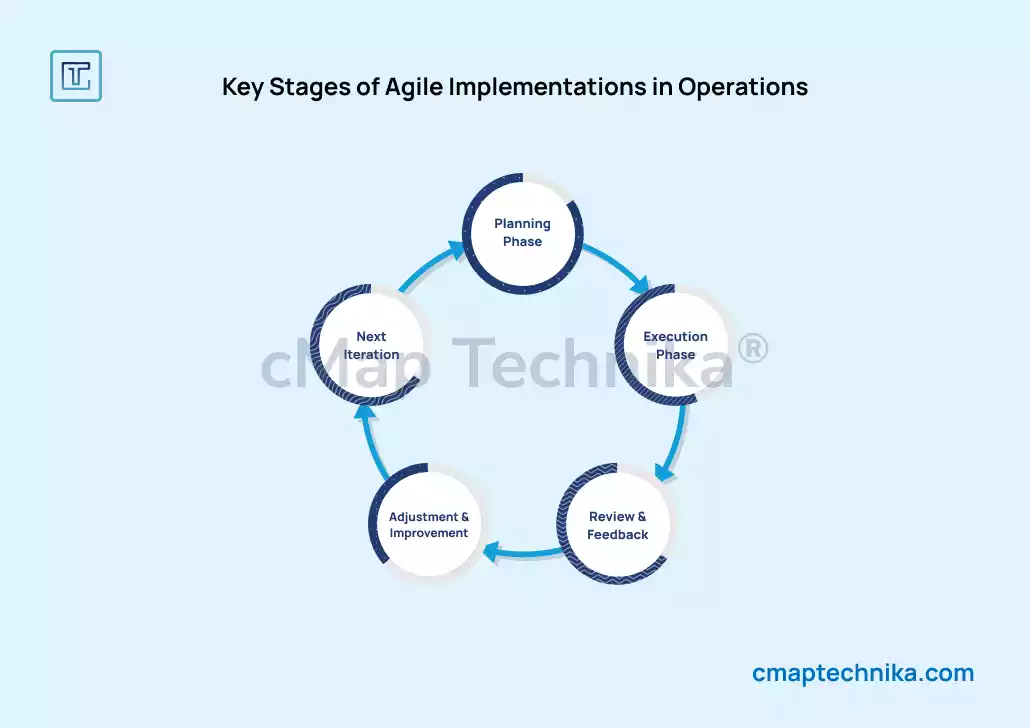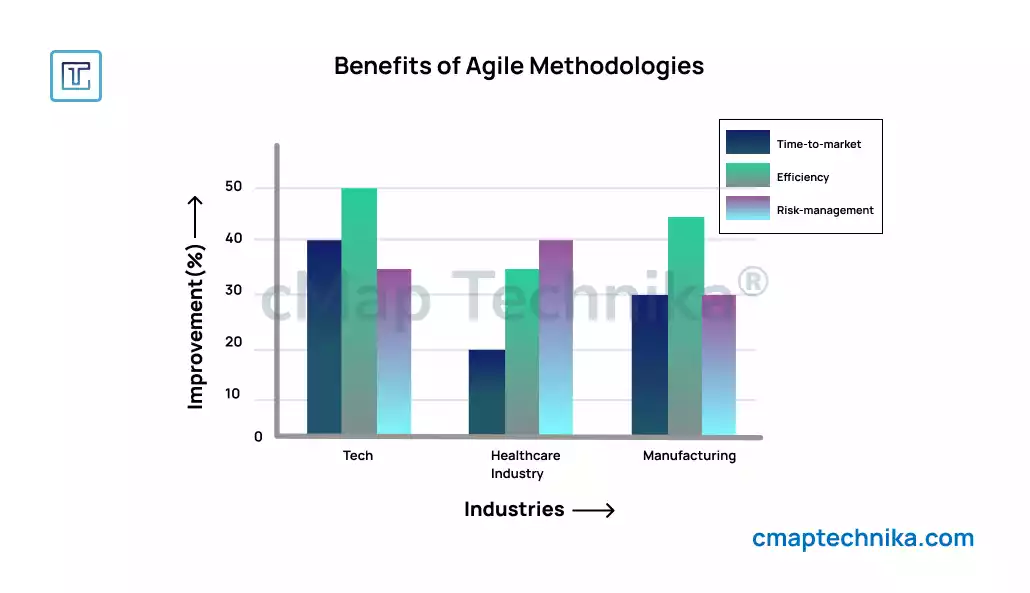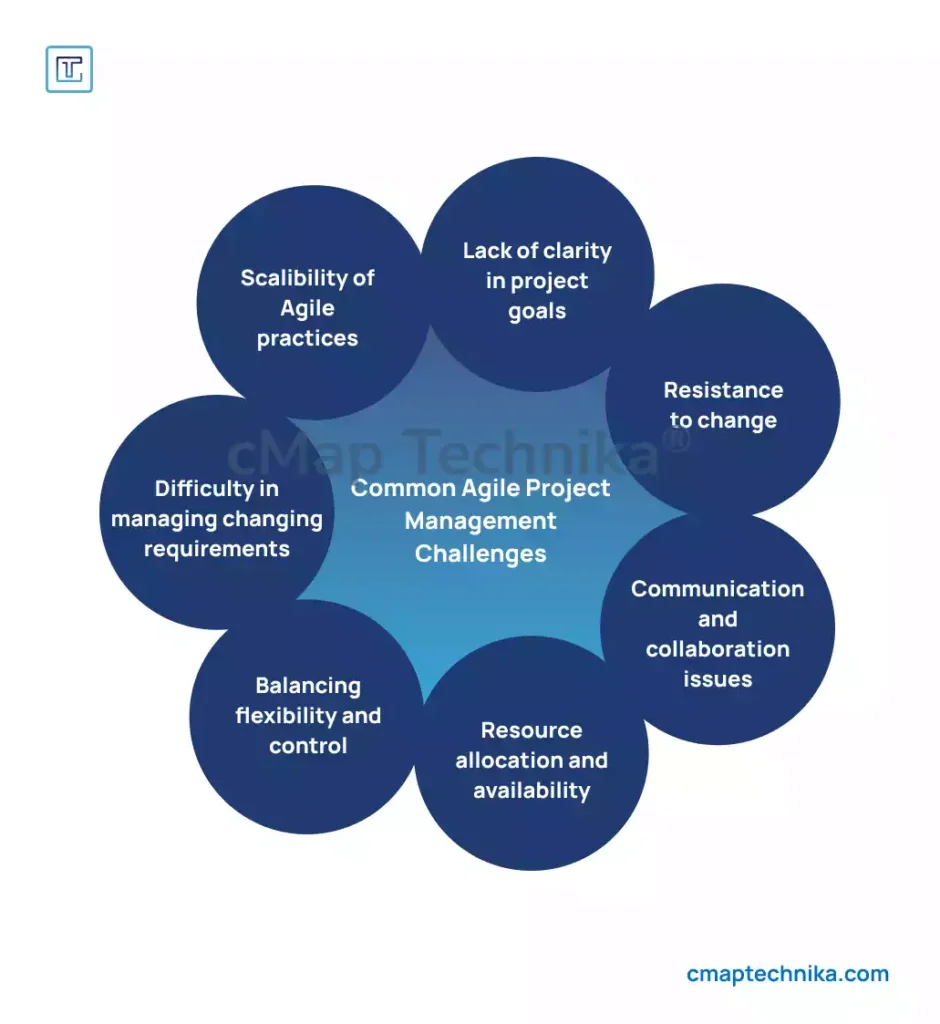In an increasingly volatile and fast-paced business landscape, the ability to adapt, respond, and deliver swiftly is no longer a luxury—it is a necessity. Traditional operational frameworks, while effective in stable environments, often fall short in dealing with rapid changes and growing complexities. Enter agile methodologies: a set of principles and practices initially designed for software development but now proving to be transformative across various industries and operational contexts.
The implementation of agile frameworks in operations has emerged as a game-changer, offering organizations the precision, speed, and flexibility needed to thrive. This article explores how agile methodologies streamline operations, reduce time-to-market, and improve responsiveness, paving the way for operational excellence.
The Essence of Agile Methodologies in Operations
At its core, agility is about adaptability. Agile methodologies focus on iterative progress, cross-functional collaboration, and customer-centricity. Unlike traditional operational models that follow a rigid, linear process, agile frameworks emphasize breaking down tasks into smaller, manageable increments called iterations or sprints. This iterative approach allows for continuous improvement, quick feedback incorporation, and the ability to pivot when circumstances change.
When applied to operations, agility enables organizations to move away from siloed workflows and rigid hierarchies. Instead, teams work collaboratively across functions, fostering a culture of shared ownership and accountability. Agile operations prioritize delivering value incrementally rather than waiting for a fully polished product or service. This means shorter delivery cycles, faster adjustments to market demands, and a sharper focus on customer satisfaction.
For instance, a logistics company implementing agile methodologies might divide its workflow into smaller phases, such as route optimization, packaging efficiency, and delivery speed. By focusing on each phase iteratively and incorporating real-time feedback, the company can refine processes continually, improving its overall operational efficiency.
Key Principles Driving Agile Operations

Agile methodologies rest on a foundation of core principles that guide their implementation. These principles are universal across industries and adaptable to various operational contexts. Understanding these principles helps organizations align their practices with agile goals.
1. Iterative and Incremental Development
Agile operations rely on breaking down large projects into smaller increments, enabling teams to focus on specific deliverables. Each iteration is an opportunity to assess progress, identify challenges, and make necessary adjustments. This principle ensures continuous improvement and minimizes the risk of failure.
For example, in product manufacturing, instead of finalizing the entire assembly process in one go, teams can test individual components in stages, ensuring quality at every step and reducing the likelihood of costly errors down the line.
2. Collaboration and Cross-Functionality
Collaboration lies at the heart of agile methodologies. Cross-functional teams, composed of members with diverse expertise, work together to achieve shared goals. This structure eliminates silos, encourages open communication, and ensures that every decision is informed by multiple perspectives.
Consider the healthcare industry, where agile methodologies are increasingly being adopted. Cross-functional teams comprising doctors, nurses, administrators, and IT professionals can collaborate to streamline patient care processes, from scheduling appointments to optimizing treatment plans, ensuring a seamless experience for patients.
3. Emphasis on Customer Feedback
Agile frameworks prioritize customer-centricity by integrating feedback at every stage of the operational process. By understanding and incorporating customer needs, organizations can ensure their products or services align with market expectations.
In the retail sector, this principle is particularly impactful. Brands that use agile methodologies can track consumer behavior in real-time, quickly introducing changes to product offerings or marketing campaigns to meet shifting demands.
4. Responsiveness to Change
Unlike traditional models that view changes as disruptions, agile methodologies embrace change as an opportunity for improvement. Flexibility and adaptability are embedded in the agile mindset, allowing organizations to respond swiftly to evolving circumstances.
For instance, during the COVID-19 pandemic, companies that had adopted agile operations were better equipped to pivot quickly, whether by shifting to remote work, adjusting supply chains, or rethinking customer engagement strategies.
Transformative Benefits of Agile Methodologies in Operations

The adoption of agile methodologies brings tangible benefits to operational workflows, enabling organizations to achieve precision, speed, and resilience. Here’s how agility transforms operations:
1. Reduced Time-to-Market
Agile operations focus on delivering value in smaller increments, accelerating the time-to-market for products and services. By prioritizing tasks and eliminating bottlenecks, teams can deliver results faster without compromising quality.
For example, in the tech industry, agile development teams can release software updates more frequently, ensuring users benefit from new features or fixes sooner than they would with traditional development cycles.
2. Enhanced Operational Efficiency
The iterative nature of agile workflows enables teams to identify inefficiencies and optimize processes continuously. Regular retrospectives, a key practice in agile, allow teams to reflect on their performance and make improvements.
Manufacturing companies adopting agile frameworks have reported significant reductions in waste, streamlined production schedules, and improved resource utilization, contributing to overall efficiency gains.
3. Improved Risk Management
Agile methodologies encourage frequent assessments and incremental progress, making it easier to identify and mitigate risks early in the process. By addressing potential issues before they escalate, organizations can avoid costly disruptions.
For example, in the construction industry, agile frameworks help project managers monitor progress and adapt to unforeseen challenges, such as material shortages or weather-related delays, ensuring projects remain on track.
4. Greater Employee Engagement
The collaborative nature of agile operations fosters a sense of ownership and accountability among team members. Employees are more engaged when they see the direct impact of their contributions and have a voice in decision-making.
Organizations that prioritize agile practices often report higher employee satisfaction and retention rates, as teams feel more empowered and valued.
5. Strengthened Customer Relationships
By integrating customer feedback into every iteration, agile operations ensure that end products or services meet customer expectations. This customer-centric approach builds trust and loyalty, strengthening relationships over time.
In the financial services sector, for instance, agile methodologies enable banks to launch new features or services more quickly, responding to customer needs with precision and speed.
Implementing Agile Methodologies: Challenges and Strategies

While the benefits of agile operations are undeniable, implementing agile frameworks is not without challenges. Organizations must navigate cultural shifts, invest in training, and address resistance to change to ensure successful adoption.
A significant barrier to agility is the legacy mindset that prioritizes rigid hierarchies and processes. Transitioning to an agile framework requires a cultural transformation, where leaders champion collaboration and empower teams to make decisions. Providing comprehensive training on agile principles and tools is also essential to equip employees with the skills needed to embrace agility.
Additionally, organizations must invest in technology to support agile workflows. Tools such as project management software, real-time data analytics platforms, and collaboration tools are critical for enabling agile operations. By leveraging these technologies, teams can streamline communication, monitor progress, and maintain transparency throughout the process.
The Future of Agile Operations
As industries continue to evolve, the relevance of agile methodologies in operations will only grow. The increasing complexity of global markets, coupled with advancements in technology, demands that organizations remain adaptable and forward-thinking. Agile frameworks provide the tools and mindset necessary to navigate this complexity, enabling businesses to deliver value consistently and efficiently.
The integration of artificial intelligence (AI) and machine learning (ML) into agile operations is a particularly exciting development. These technologies can enhance predictive capabilities, automate routine tasks, and provide deeper insights into operational performance, further amplifying the benefits of agility.
Organizations that embrace agile methodologies are better positioned to lead in a rapidly changing world. By fostering a culture of collaboration, adaptability, and customer-centricity, they can achieve operational excellence and drive long-term success.
Conclusion
Agile methodologies represent a paradigm shift in how organizations approach operations, offering a pathway to precision, speed, and resilience. By breaking down silos, embracing change, and prioritizing customer feedback, agile frameworks enable businesses to streamline workflows, reduce time-to-market, and enhance responsiveness. The transformative potential of agility lies not only in its ability to improve operational efficiency but also in its capacity to create a culture of continuous improvement.
As industries across the globe adopt agile practices, the message is clear: agility is no longer optional; it is essential. Organizations that implement agile methodologies are not just adapting to change—they are shaping the future, one iteration at a time.







